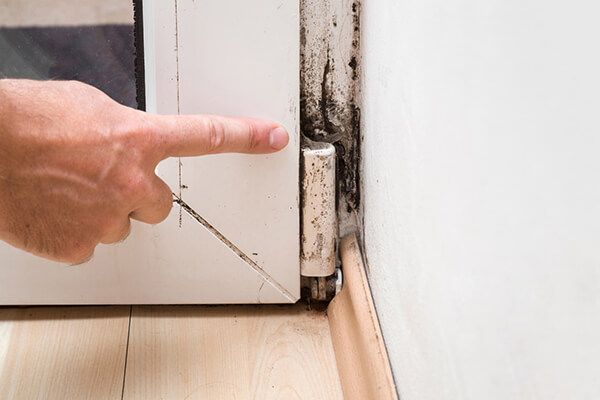Testing Air Quality After Mold Remediation
Testing Air Quality After Mold Remediation
Blog Article
Effective Blog Post Mold And Mildew Remediation Solutions for Your Home
Mold and mildew growth in homes can be a persistent concern, commonly calling for a methodical technique for efficient post-remediation services. From understanding the aspects that add to mold development to applying correct cleaning techniques and wetness control procedures, the procedure can be elaborate yet critical for maintaining a healthy living atmosphere. In addition, checking out all-natural removal remedies and developing a regular for recurring maintenance are crucial components of a thorough mold remediation approach. As property owners make every effort to deal with mold and mildew concerns, locating the most effective options ends up being paramount for the wellness of their households.
Recognizing Mold And Mildew Development Aspects
Mold and mildew growth is affected by a variety of aspects that are essential to comprehend in order to efficiently attend to and avoid its spreading. Recognizing these elements is crucial in carrying out successful mold removal techniques. The key variable contributing to mold development is wetness. Mold spores call for moisture to germinate and grow, making moist or wet settings extremely vulnerable to mold and mildew problems. Poor air flow can also cause moisture build-up, developing a suitable breeding place for mold and mildew.

Furthermore, air flow and light direct exposure can affect mold and mildew growth. Areas that lack correct air flow and all-natural light are more vulnerable to mold development. By dealing with these variables thoroughly, individuals can effectively alleviate mold and mildew growth and safeguard their living environments.
Proper Mold And Mildew Cleaning Techniques
Making use of reliable cleansing approaches is important in stopping the recurrence and addressing of mold contamination in interior settings. The very first step in proper mold and mildew cleansing is to consist of the affected area to prevent the spread of spores to unpolluted locations.

Applying Dampness Control Procedures
To efficiently prevent mold and mildew growth and contamination in indoor settings, carrying out dampness control measures is extremely important. Furthermore, making sure appropriate ventilation in locations susceptible to moisture buildup, such as kitchens and shower rooms, can help minimize the threat of mold development. By diligently implementing these dampness control measures, house owners can effectively minimize the chance of mold recontamination and preserve a healthy interior environment.
Utilizing All-natural Removal Solutions
After successfully carrying out moisture control measures to avoid mold development in indoor atmospheres, property owners can now explore the efficiency of all-natural removal solutions in maintaining a healthy space. All-natural removal solutions use ecologically pleasant approaches to combat mold and mildew, making them a prominent option for those looking for safe choices. One such solution is using vinegar, a natural antimicrobial agent, to disinfect and clean surfaces contaminated by mold. Simply water down vinegar with water and spray it onto the impacted areas, enabling it to sit for a few hours prior to wiping clean. In addition, tea tree oil, known for its antifungal buildings, can be blended with Get the facts water and splashed onto mold-infested surface areas to hinder more development. One more all-natural choice is hydrogen peroxide, which can successfully eliminate mold and mildew on different surfaces without leaving hazardous residues behind. By incorporating these natural remediation remedies right into their cleansing routines, property owners can effectively combat mold growth while advertising a healthier indoor setting on their own and their family members.

Maintaining a Mold-Free Environment
In order to protect against mold reoccurrence and make sure a consistently mold-free setting, it is important for property owners to execute aggressive upkeep methods. Frequently evaluating areas susceptible to mold and mildew growth, such as shower rooms, attic rooms, kitchens, and basements, is essential. Dealing with any type of leakages, water damage, or excess dampness without delay can substantially lower the threat of mold development. Post Mold Remediation. Proper air flow in locations with high moisture levels is also key to avoid mold and mildew growth. Making use of dehumidifiers or exhaust fans can help keep optimum dampness levels and inhibit mold and mildew spores from thriving.
Additionally, preserving tidiness in the home is vital for mold prevention. Frequently cleansing and cleaning surfaces, carpetings, and upholstery can aid get rid of mold spores prior to they have a chance to you could look here multiply and resolve. Making use of mold-resistant items for building materials and home furnishings can better help in developing a mold-free setting. Maintaining indoor plants in check and making sure appropriate water drainage in outdoor landscaping can minimize moisture build-up, lowering the chance of mold problems. By following these aggressive upkeep techniques, house owners can successfully promote a mold-free space.
Verdict
Finally, it is essential to resolve mold and mildew development variables, utilize proper cleansing techniques, apply moisture control measures, utilize all-natural removal services, and maintain a mold-free atmosphere in order to successfully take care of post mold and mildew removal in your house - what to do after mold remediation. By adhering to these methods, you can avoid mold from persisting and ensure a healthy and balanced living setting for you and your family
The key factor contributing to mold and mildew development is dampness. Mold and mildew spores require dampness to sprout and prosper, making damp or moist atmospheres extremely vulnerable to mold and mildew invasions.To properly protect against mold growth and contamination in indoor environments, carrying out dampness control measures is extremely important. In addition, making sure proper air flow in areas susceptible to moisture buildup, such as cooking areas and Full Report washrooms, can help lower the risk of mold and mildew development.After efficiently applying dampness control procedures to protect against mold growth in interior settings, home owners can now discover the performance of natural removal solutions in keeping a healthy living space.
Report this page